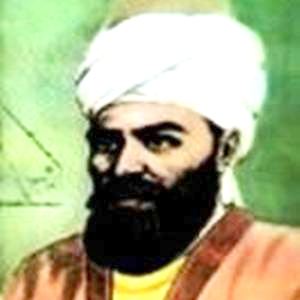Name Ahmad Muhammad Region Baghdad Era Islamic Golden Age | Died Egypt Role Astronomer Main interests Astronomy | |
 | ||
Major works The compendium (jawamiʿ) of the Almagest Similar People Muhammad ibn Musa al‑Khwarizmi, Al‑Kindi, Regiomontanus, Ptolemy, Dante Alighieri | ||
Abū al-ʿAbbās Aḥmad ibn Muḥammad ibn Kathīr al-Farghānī. (800/805-870) also known as Alfraganus in the West, was a Muslim astronomer in the Abbasid court in Baghdad, and one of the most famous astronomers in the 9th century. The lunar crater Alfraganus is named after him.
Contents
Life
He was involved in the calculation of the diameter of the Earth by the measurement of the meridian arc length, together with a team of scientists under the patronage of al-Ma'mūn in Baghdad. Later he moved to Cairo, where he composed a treatise on the astrolabe around 856. There he also supervised the construction of the large Nilometer on the island of al-Rawda (in Old Cairo) in the year 861. Some modern sources describe him as Arab or Persian
Works
His textbook Kitāb fī Jawāmiʿ ʿIlm al-Nujūm (كتاب في جوامع علم النجوم A Compendium of the Science of the Stars) or Elements of astronomy on the celestial motions, written about 833, was a competent descriptive summary of Ptolemy's Almagest, while using the findings and revised values of earlier Islamic astronomers. It was translated into Latin in the 12th century and remained very popular in Europe until the time of Regiomontanus. Dante Alighieri's knowledge of Ptolemaic astronomy, which is evident in his Divina Commedia as well as other works such as the Convivio, seems to have been drawn from his reading of Alfraganus. In the 17th century the Dutch orientalist Jacob Golius published the Arabic text on the basis of a manuscript he had acquired in the Near East, with a new Latin translation and extensive notes.
In the 15th century, Christopher Columbus used al-Farghani's estimate for the Earth's circumference as the basis for his voyages to America. However, Columbus mistook al-Farghani's 7091-foot Arabic mile to be a 4856-foot Roman mile, causing him to underestimate the Earth's circumference, believing he could take a shortcut to Asia.
